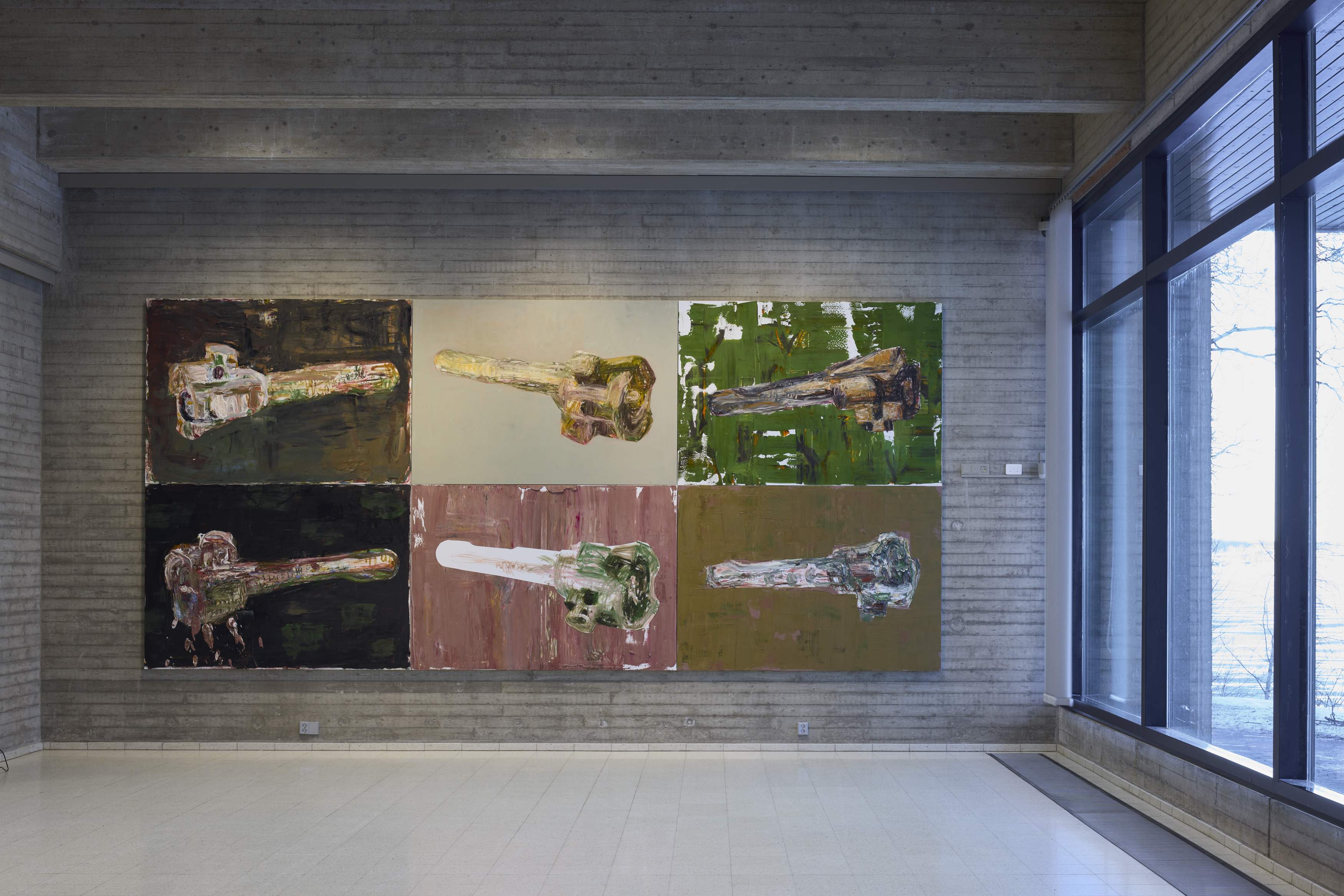Heikki Marila's major retrospective at the Sara Hildén Art Museum
Heikki Marila (b. 1966), who lives and works in Turku, is one of the most important Finnish painters of his generation. Marila's paintings have had a social perspective since his student days. The theme of power is a recurrent theme in Marila's work.
The exhibition opens with Marila's paintings from the 1990s, which deal with power, Finnish national identity and the social structures of society. Parliament House (1996) is one of a series in which Marila depicts the institutions of power in miniature. On the other hand, subjects that were considered insignificant have been given a monumental scale, such as Dole Office (2001), which depicts the lobby of an employment office.
"Heikki Marila's paintings use visual clues to open up perspectives on social situations from which we can interpret the undercurrents of different eras. Some of these we recognise as recurring in our own time," says museum director Anna Hjorth-Röntynen.
In the early 2000s, Marila's attention turned to one of the most famous paintings in the history of Western art, the Isenheim Altarpiece (c. 1512–1516), and its most famous part, the Crucifixion. Marila was inspired to create this series of works by the emotion the work evoked in her.
Marila also painted his first flower paintings at the beginning of the millennium. The works were based on 17th century Dutch flower paintings and their rich symbolism. The subject matter, considered commonplace and light-hearted, was painted by Marila on as large a scale as possible. In 2011 she won the prestigious Carnegie Art Award for her three flower paintings.
In the museum's upper lobby is a series of Marila's celestial paintings, inspired by the rich celestial views of the Baroque artist Giovanni Battista Tiepolo. Marila's Jacob's Wrestling Triptych (2014) refers to the biblical story of Jacob wrestling with God or an angel. There are also three landscape paintings by Marila, in which the artist approaches the subject as one of the most recognisable types of image in the history of painting.
On the ground floor of the museum are brand new floral paintings and other works exploring themes of power and violence that address the current state of the world. The Bolt series (2024) are based on the bolt of an assault rifle. Downstairs is part of the series Maps (2004-05), which depicts suburbs.
For Marila, the subject is a reason to paint. The process of painting itself creates content in the works. ”The way the painting is made, the trace of the material painting, must contribute to the content of the painting I am looking for. It is difficult to explain this in words, because it is an intuitive thing", says the artist.
"This is a cornerstone exhibition that highlights a thirty-year period in a very subtle way. The exhibition has great, concise content and it really gives a good overview of my production. After this, most of these works won't be seen together for a long time, so it's worth coming to see them," says Marila.
"The hanging of the exhibition is rich, but so are Heikki Marila's paintings. Despite its breadth, Marila's artistic work is clear and coherent. The way he deals with power in his art is really interesting. Overall, the exhibition has been a pleasure to work on," says curator Saara Heikinheimo.
The exhibition continues the Sara Hildén Foundation's series of presentations of artists from the collection. It is accompanied by a richly illustrated exhibition book (Sara Hildén Art Museum Publications 110). The articles in the publication are written by art historian Riikka Stewen, journalist, writer and critic Timo Valjakka and exhibition curator Saara Heikinheimo.
The exhibition will be accompanied by a cooperation project with the Pirkanmaa Art Teachers' Association. Inspired by the art of Heikki Marila, the project will involve high school and university students creating their own flower paintings, which will be displayed at the exhibition at the end of February.
Heikki Marila 8.2.-18.5.2025 at the Sara Hildén Art Museum




